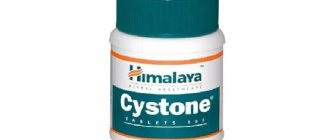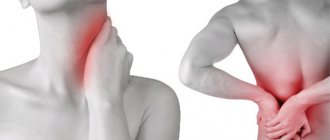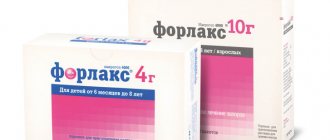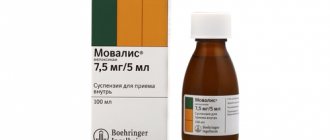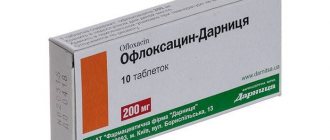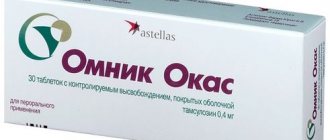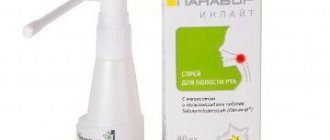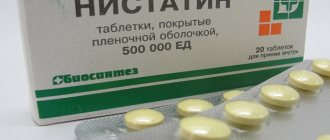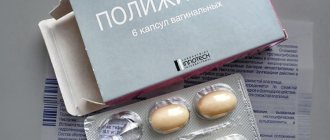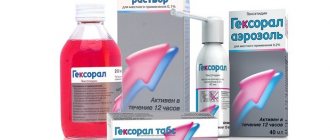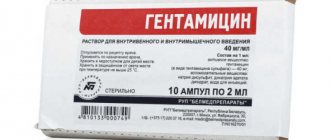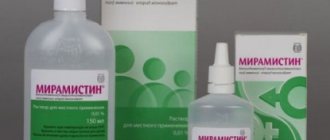Dioxidin is an antibacterial drug that was actively used in hospitals during Soviet times. Today it is also used, but without fanaticism and with good reason. Indeed, Hydroxymethylquinoxyline dioxide (this is what the international nonproprietary name of Dioxidine sounds like) in large doses has a high degree of toxicity, which means it requires a competent and balanced approach when prescribing.
What kind of “beast” is Dioxidin?
In the middle of the last century, a potent substance with a long “name” enjoyed success in many hospitals in the country. The base is a yellow-green, odorless powder. The bactericidal agent destroys the membranes of harmful cells and prevents their proliferation.
The success of the medication among Soviet doctors was explained by its high efficiency in eliminating microorganisms that cause purulent processes. A powerful antiseptic easily copes with streptococci, staphylococci, Pseudomonas aeruginosa and pathogenic anaerobes.
The ability to fight pathogens that develop without the participation of oxygen distinguishes Dioxidin from other antibacterial drugs. By the way, scientists have not yet been able to determine how he does this. It is only known that the drug prevents the formation of DNA and disrupts the structure of enemy cells.
>>We recommend: if you are interested in effective methods of getting rid of chronic runny nose, pharyngitis, tonsillitis, bronchitis and persistent colds, then be sure to check out this page of the site after reading this article. The information is based on the author’s personal experience and has helped many people, we hope it will help you too. Now let's return to the article.<<
For whom the drug is contraindicated
Like other medicinal products, Dioxidin is not recommended for use in specific cases, namely:
- allergy or observation of intolerance to one or more components of the drug;
- young age of the patient;
- pregnancy and natural feeding;
- the course of serious kidney or liver diseases, which are accompanied by an increase in temperature.
In this case, the doctor must select another remedy for the patient that will have a positive therapeutic effect.
What do the studies say?
Clinical trials were conducted in 24 different hospitals. In total, the experiments lasted 15 years. The results were impressive. The studies involved patients with severe infections that could not be treated with antibiotics. The use of 0.5%, 0.1%, and 1% Dioxidin in patients with purulent pathologies of the urinary system, ENT organs, burns, and osteomyelitis gave a positive result in 85% of cases.
Maximum productivity was achieved in the treatment of extensive burns, deep trophic ulcers and open fractures complicated by suppuration of soft tissues. After several days of treatment, the spread of infection stopped and healing began.
It turns out that the percentage of Dioxidin is of great importance. Thus, for osteomyelitis, a 0.1% solution turned out to be the most effective, and for festering wounds - 1%. In the first stage of an infectious wound process, 5% Dioxidine ointment helped well.
For patients with severe bacterial lesions of the respiratory and urinary tract, the solution was administered intravenously 2 times a day. A good therapeutic effect was achieved in 88% of cases. The result was even better in patients with peritonitis. Intracavitary infusions of a 0.5% solution gave a 100% result.
Doctors at the All-Russian Center for Surgery B.V. Petrovsky prescribed Dioxidin in ampoules to prevent complications after operations on the abdominal organs. This made it possible to reduce the number of postoperative purulent inflammations. Experts noted excellent tolerability. Side effects were recorded only with intravenous administration; no side effects were noted with intracavitary or external use.
At the N. N. Burdenko Institute of Neurosurgery, the antiseptic became a real discovery. Endolumbar administration did not cause convulsions, which is very valuable for purulent pathologies of brain tissue.
All this increased the popularity of the drug, which became almost the main assistant in the fight against severe infections.
Composition and range of applications
The main active ingredient of the drug Dioxidin is hydroxymethylquinoxaline dioxide, which is a synthetic antimicrobial drug.
Substances that act as preservatives are used as additional components, which ensure longer storage of the medicine.
Dioxidin is a medicine with a wide spectrum of effects. In otolaryngology, it is allowed for use in adults and children in the fight against inflammatory diseases of the ears. The use of Dioxidin is effective against the following groups of microorganisms:
- staphylococci;
- Proteus;
- streptococci;
- Pseudomonas aeruginosa;
- shigella;
- Klebsiella
The wide range of effects of Dioxidin for the ears is due to its effectiveness in the fight against anaerobic bacteria, characterized by resistance to the effects of other antimicrobial drugs.
The drug promotes the destruction of the bacterial cell membrane, disrupting the internal metabolic processes of the pathogen. Thanks to this, there is a rapid improvement in the patient’s health and elimination of symptoms associated with the disease.
When is Dioxidin prescribed?
In medical practice, the intravenous use of ear drops in the form of a solution is practiced only in a hospital setting as the basis of therapy for severe bacterial infections that were caused by microorganisms that are insensitive to other antibiotics. Since Dioxidin has a toxic effect, therapy should be monitored by a qualified specialist: regular monitoring of the condition, testing, and examination.
Intravenous injections are prescribed in this case:
- purulent meningitis;
- sepsis due to extensive burn wounds;
- generalized purulent-inflammatory process.
Ear drops in the form of intravenous injections are used for prophylaxis to prevent the development of infections during cardiac surgery - coronary bypass surgery, vascular replacement.
A 1 percent solution is prescribed for the treatment of the following conditions:
- cystitis;
- purulent pleurisy;
- inflammation of the peritoneum - peritonitis;
- purulent inflammation of the gallbladder - empyema;
- to prevent complications after bladder catheterization.
If we talk about Dioxidin in the form of an ointment, then it is used as an addition to complex treatment for:
- trophic ulcers;
- purulent wounds;
- osteomyelitis;
- extensive burns;
- purulent mastitis;
- infectious lesions of the epidermis that develop against the background of streptococcal and staphylococcal bacteria.
The solution, packaged in 5 ml, is prescribed to eliminate rhinitis and sinusitis. It is dripped into the nose, and it is also used to complement complex therapy in the treatment of otitis media and inflammatory processes associated with the penetration of pathogenic bacteria into the ears.
Inhalation therapy is prescribed to treat respiratory diseases. To carry out the procedure, the 1% composition is diluted with physiological solution in a ratio of 1:4, the 0.5% solution is diluted in a ratio of 1:2. For one procedure, 4 ml of diluted product will be enough - add it to the water for inhalation.
A fly in the ointment
And everything would be fine if not for one “BUT”.
In fact, Hydroxymethylquinoxyline dioxide is a poison that requires careful attention. Designed for hospitals. Home use is possible only with strict adherence to the instructions for use of Dioxidin and only as prescribed by a doctor. Perhaps many will have a question: if Dioxidin is so dangerous, why do pediatricians prescribe it to children? Unfortunately, some doctors, especially the old-school ones, like to prescribe Dioxidin drops for the nose or ear. At the same time, parents are given only a prescription without any accompanying explanations, which is unacceptable. You will learn very soon how to drip Dioxidin into a child’s nose and whether it is worth doing it. In the meantime...
Storage conditions and periods
How to store an open ampoule? This medication belongs to list B drugs. According to the instructions for use, it is recommended to store it in a light-protective place and inaccessible to children and animals.
The optimal temperature conditions for storing Dioxidin will be 15-25°C. If the temperature drops below 15°, precipitation of crystals in ampoules with medicine may occur. In this case, before using the drug, it should be heated in a water bath until the sediment is completely dissolved.
The shelf life of the drug when unopened, if all rules are followed, is 2 years. If the product has already been opened, then it is stored for much less time - in ampoules only for a day, and in the form of a diluted solution - 48 hours.
Indications for use of Dioxidin
The antimicrobial agent effectively fights the bacteria Proteus vulgaris, salmonella, Friedlander's bacillus, staphylococci, Klebsiella, Shigella, pathogens of dysentery and gangrene.
Prescribed for purulent processes of any localization. Indispensable in the treatment of pleurisy, cystitis, lung abscesses, phlegmon, burns. Release form: solution (0.5% and 1%) and ointment (5%). For pneumonia, peritonitis, soft tissue abscesses, cystitis, mastitis and other infectious diseases of the chest, abdominal cavity, bile and urinary tract, Dioxidin solution is injected directly into the affected cavity.
Intravenous drip medication is prescribed for purulent meningitis, sepsis, rapidly spreading purulent infection and for the prevention of postoperative complications.
Dioxidin ointment is used externally for burns, deep wounds, trophic ulcers, osteomyelitis and phlegmon.
Why is Dioxidin prescribed?
According to the instructions, the drug helps if the patient is bothered by purulent bacterial infections caused by sensitive microflora when other chemotherapeutic agents are ineffective or poorly tolerated.
External use
- superficial and deep wounds of various locations;
- long-term non-healing wounds and trophic ulcers;
- soft tissue phlegmon;
- infected burns;
- purulent wounds with osteomyelitis.
Intracavitary administration
- purulent processes in the chest and abdominal cavity;
- for purulent pleurisy, pleural empyema, lung abscesses, peritonitis, cystitis, wounds with deep purulent cavities (soft tissue abscesses, pelvic cellulitis, postoperative wounds of the urinary and biliary tract, purulent mastitis).
Intravenously
- septic conditions (including in patients with burn disease);
- purulent meningitis;
- purulent-inflammatory processes with generalization symptoms.
Contraindications and side effects
The drug is not used to treat pregnant, lactating women and children. Individual intolerance to Hydroxymethylquinoxyline dioxide and adrenal insufficiency are also contraindications.
Most common side effects:
- temperature increase;
- chills;
- cramps of the calf muscles;
- headache;
- insomnia;
- stomach ache;
- diarrhea;
- vomit;
- redness and itching of the skin.
If any unpleasant symptoms appear, stop taking it.
Contraindications
Quinoxaline derivatives should not be used by people intolerant to the drug. Since it is excreted by the kidneys, it is contraindicated in adrenal insufficiency. As already mentioned, it is prohibited to use during pregnancy and children under 7 years of age.
Nasal rinsing with Dioxidin for sinusitis or sinusitis in patients with renal failure is not a contraindication, but is carried out under the supervision of a physician with extreme caution.
Even the dosage of ointment for external application should be strictly selected by the attending physician. It is placed using a turunda or a cotton swab, which is removed after 15 minutes. If necessary, reduce the dose.
Side effects
When Dioxidin is administered, sick people may experience negative reactions of the body, manifested by the following symptoms:
- Fever;
- Muscle spasms, chills;
- Headache;
- Allergy;
- From the gastrointestinal tract, nausea or vomiting is possible.
If an antimicrobial drug is applied to the skin for wounds of bacterial origin, patients may develop dermatitis around the injury.
In rare cases, due to increased dosage, patients experience the appearance of skin pigment spots. The fact is that a group of quinoxaline derivatives can increase individual skin sensitivity to ultraviolet rays.
Pigmentation usually occurs on the hands or face. But this side effect disappears after the prescription of antiallergic tablets with a simultaneous increase in the time between the use of antimicrobial medication or a reduction in its dose.
If preventive measures do not have a positive result, the antibacterial medicine is discontinued.
To avoid the development of side effects during treatment, tolerance tests are carried out. To do this, a 1% concentration of drops is instilled intranasally and after 3-6 hours the patient’s health condition is assessed.
If no negative manifestations occur, then therapeutic manipulations are continued.
Since the quinoxaline derivative inhibits the function of the adrenal cortex, it is very important to use it carefully in people with chronic renal failure.
Doctors prescribe a lower dose, reduce the frequency of intranasal procedures (rinsing, instillation, inhalation) and shorten the duration of treatment.
If the patient has developed acute sinusitis, then the simultaneous use of antihistamines with an antibacterial component is not recommended.
Antiallergic drugs reduce mucus production, which inhibits the drainage function of the paranasal sinuses. Therefore, in case of acute sinusitis with allergic reactions, the antiseptic is temporarily discontinued.
If the inflammation of the maxillary cavities is chronic, then antihistamine tablets or injections are suitable for simultaneous use in treatment. But to improve mucus drainage, patients are advised to frequently rinse their nose with saline liquids. This action helps to avoid drying out of the mucous membranes.
In case of overdose, the following symptoms may occur:
- Acute adrenal insufficiency;
- Arrhythmias, decreased blood pressure;
- Nausea, diarrhea, flatulence, vomiting;
- Lethargy, hallucinations;
- Epileptic or muscle cramps;
- Coma.
Symptoms of overdose are relieved by completely stopping the drug and prescribing hormone replacement therapy.
You need to know this!
Dioxidin is prescribed to children in exceptional cases. Before use, you should check the functioning of the urinary system and do a drug tolerance test.
The main disadvantage of the drug is its negative effect on the functioning of the adrenal glands. After 60 years, kidney performance decreases; for older people, a prescription is issued after laboratory tests.
The drug is recommended for stationary use. In this case, for intravenous drip administration it is better to use a 0.1% solution, because 1% is characterized by unstable storage. Store the antiseptic in a warm room.
If you see that the solution has crystallized, do not be alarmed. This happens often. Heat it in a water bath and use as recommended by your doctor.
Please note that administration of Dioxidin without a dropper (just into a vein) is contraindicated. Intracavitary administration is carried out using a catheter or syringe.
Analogs
Complete analogues
- Hydroxymethylquinoxyline dioxide;
- Dioxysept;
- Diquinoxide;
- Urotravenol.
Analogs are determined by action:
Preparations 5-NOK, Galenophyllipt, Hexamethylenetetramine, Zyvox, Kirin, Kubitsin, Monural, Nitroxoline, Ristomycin sulfate, Sangviritrin, Urophosphabol, Fosfomycin, Linezolid-Teva, Zenix, Amizolid, Dioxicol, Quinoxidine.
When choosing analogues, you must remember that the instructions for use of Dioxidin, price and reviews do not apply to drugs of similar effect. Replacing the drug is permissible only after the recommendation of a doctor.
Dioxidin - a cure for a runny nose?
Doctors often prescribe Dioxidin for a runny nose.
Trophic ulcers, meningitis, sepsis... And then “bang” - a runny nose? Is it possible to use Dioxidin for a runny nose? After all, there is nothing like that in the testimony. Useful information: Delufen spray - instructions, dosages, application features, 8 analogues
First of all, you need to understand that the drug is not used for mild nasal congestion. There are other medications for this. The use of Dioxidin in the nose is justified if:
- a runny nose has been bothering you for several months;
- you have tried everything possible, including antibiotic therapy;
- The discharge from the nasal passages acquired an unpleasant odor and a greenish color.
In these cases, the antiseptic helps well. It quickly suppresses pathogenic microflora and alleviates the general condition after just a few instillations.
Dioxidin is used not only in the treatment of severe burns and extensive phlegmon, but also sinusitis, otitis, and periodontal disease.
Now about the children. After reading the instructions for use, many parents will think about whether to drip Dioxidin into the child’s nose or not. And they will do the right thing by thinking about it. The use of this drug in pediatric practice is disputed. There are several reasons for this:
- insufficient knowledge of the mechanism of action;
- high probability of overdose;
- a large selection of other, “softer” bactericidal agents.
However, sometimes Dioxidin is extremely necessary for children. We are talking about diseases when traditional treatment of chronic purulent processes does not bring results.
Dioxidin - application
The drug is often prescribed as the main aid for purulent processes, wounds, burns to treat the affected area. Dioxidin is also indicated for washing internal cavities: peritonitis (in the peritoneum), pleurisy, lung abscesses and inflammation between the membranes of the main respiratory organs. The product will cope with dysentery and Klebsiella bacilli, Pseudomonas aeruginosa and other bacteria. The drug is not prescribed to children under 12 years of age; it is optimal not to use Dioxidin under 18 years of age.
There are options for using the composition to relieve chronic runny nose, sinusitis, and otitis caused by bacteria resistant to other antibiotics. The product will provide not only cleansing of the burned surface when rinsing, but also tissue regeneration. The product is effective even against pathogens resistant to the latest 4th generation drugs. Pharmacies offer different forms of the product for different purposes:
- Ampoules with a one percent solution are used for rinsing (no more than 70 ml/day).
- Three percent ointment should be applied under a bandage to the affected surface only 1 time/day.
- Dioxidin is dripped into the nose of children three times a day, drop by drop - to prevent more serious diseases, in case of chronic inflammatory process. This measure helps to avoid complications of rhinitis, however, pediatricians often select more gentle remedies.
- For chronic runny nose caused by antibiotic-resistant bacteria, it is permissible to drip Dioxidin into the nose of an adult instead of standard vasoconstrictors. The dosage is almost the same. There is no special packaging for nasal use.
- Other indications are empyema of the gallbladder, cystitis, preventive measures against infectious complications.
Compound
The main active ingredient, dioxidin, is essentially a poison, so it is used with caution. The ampoules contain hydroxymethylquinoxaline dioxide (10 mg/ml, each 100 mg); the excipients include only water for injection. The ointment contains:
- main substance – 5 g;
- polyethylene oxide 400 and 1500 – 74.9 and 20 g each;
- nipagin – 0.08 g
- propyl ester of acid (parahydroxybenzoic) – 0.02 g.
- 5 Best Antibiotic Ointments for Wound Healing
- Tablets for sinusitis in adults and children
- How and for what purpose Digoxin tablets and ampoules are taken - composition, contraindications, analogues and price
Release form
Please note: there is no special bottle for nasal use, because... the introduction of agents against pathogenic microflora is very limited. The main forms are liquids and ointments of different percentages, and the ratio is as follows:
- in ampoules – 0.5 and 1%, 5 and 10 pcs.;
- in ointment - 5% of the substance, in tubes of 30 or 50 grams.
Pharmacodynamics and pharmacokinetics
Hydroxymethylquinoxaline dioxide destroys the membrane cells of pathogens. However, it does not act this way on all microorganisms, so ideally a bacterial culture is needed to determine their sensitivity to the antibiotic. Otherwise, the use of Dioxidin will not be justified. As for children's use, it is important to know: the drug can damage the villi of the mucous membrane, so it is better to avoid injecting it into the nose or wiping it with a cotton pad soaked in the substance. On wounds, the drug is partially absorbed by body cells, but is well excreted by the kidneys.
Indications for use
The main indications for use include all types of burns, rotting wounds and abscesses. In this case, even pathogenic flora resistant to conventional antibiotics is destroyed. However, there are nuances:
- the product is used for abscesses in the abdominal cavity, lungs, pleura - up to 70 ml/day;
- the ointment is applied to the affected surfaces in a thin layer once a day;
- to rinse the nasal sinuses in children, only a 0.5% solution is used, or the substance from an ampoule with a 1% composition is diluted with water in half (in equal proportions);
- in case of severe sepsis and severe inflammation, the presence of microbes in the blood, it is permissible to use a 0.5% solution intravenously - diluting it in 5% glucose or sodium chloride (isotonic solution) - in a concentration of up to 0.1-0, 2%.
Contraindications
During pregnancy, use is limited, as is the case with problems with the kidneys and bladder, when the dose is reduced. In addition, there are clear contraindications for the product. This:
- insufficient functioning of the adrenal glands;
- individual intolerance;
- children's age (up to 18 years).
Directions for use and dosage
There are several options for using the substance. The drug is prescribed only to adults. After the tolerance test, 10 milliliters of solution (1%) are supplied to the cavities. Reactions to the substance are monitored; their absence within 6 hours will indicate that the composition can be used as a course, otherwise Dioxidin will not be prescribed. Other options:
- A drainage tube is taken, which is used to drain pus or blood, a syringe or catheter - 10-50 ml of solution is injected at a time.
- For osteomyelitis, apply the product to purulent wounds in the amount of 15-20 drops per minute, using Dioxidin in the same mode for 1-2 hours, in severe forms - up to half a day.
- To rinse the nose of children or introduce it into the ear canal, a 1% solution must be diluted with the same amount of boiled water or used 0.5%.
- Dimexide - instructions for use, reviews
- Sulfadimethoxine: indications for use of the drug
- The use of hydrocortisone in ampoules for inhalation and injections
special instructions
When stored at temperatures below 15 degrees, sediment (crystals) may form in the ampoules - they can be dissolved by heating in a water bath, shaking occasionally. If, after cooling to a temperature of 36-38 degrees, the crystals do not fall out again, the drug is considered normal and acceptable for use. Special attention is also paid to side effects and further treatment. The following nuances are taken into account:
- Antihistamines (antiallergic) drugs can reduce negative manifestations.
- To compensate for the effects of the antibiotic, calcium is prescribed.
- If spots on the skin are detected (due to photosensitivity), the dose is reduced.
During pregnancy
Dioxidin is prescribed during pregnancy only if other prescriptions are ineffective, and the result will be more significant than the harm from its use. The danger of the product lies in its action:
- teratogenic (development of defects and deformities);
- embryotoxic (toxicity causes functional, structural disorders of the child’s body, including after birth);
- and then - into breast milk (natural feeding is suspended while taking the medicine).
Dioxidin for children
The use of the product for children is of dubious benefit. It is rarely prescribed by pediatricians. There is an opinion that it is possible to rinse the nasal passages, but this is only reasonable in cases of severe chronic inflammation and the absence of bacterial response to other, more traditional antibiotics. At the same time, it is taken into account that the child can swallow the substance, and when instilled, an unpleasant bitter taste is felt. How to drip Dioxidin into a child’s nose correctly:
- Do not allow the product to enter the gastrointestinal tract.
- Invite your child to hold his breath.
- Tilt his head and inject the product with a syringe or syringe without a tip.
- If necessary, combine drops with hydrocortisone (to relieve swelling, remove allergic manifestations), adrenaline (a vasoconstrictor), water for injection, diluted sodium chloride - to change the percentage of the substance and ease of irrigation.
- Please note that the normal prescription of Dioxidin by pediatricians under the age of 12 years is extremely limited (diluted 1 to 1 with water).
Interactions with drugs
Interactions with other drugs have not been described, and there is no prohibition on their use. However, they additionally give:
- Calcium preparations – as an antiallergic agent.
- Antihistamines.
- Hydrocortisone as an anti-inflammatory for sinusitis, severe congestion of the paranasal sinuses.
Side effects
When taking the drug, side effects are taken into account. Among them are headache and chills. Still possible:
- allergic manifestations;
- photosensitivity (pigmented sun spots);
- nausea, diarrhea, vomiting;
- periwound dermatitis (skin irritation);
- temperature increase;
- convulsions.
Overdose
Symptoms of overdose include both excessive symptoms from the list of side effects and acute insufficiency of adrenal cortex function:
- To cope with the difficulty of synthesizing corticosteroids (stress hormones), therapy must be stopped.
- For other manifestations of overdose, therapeutic methods are selected - symptomatic treatment.
- Hormone replacement therapy is allowed - in the form of doses of glucocorticosteroids determined by the doctor (normally - up to 1 mg per kilogram of the patient’s weight).
What are compound drops?
Doctors often prescribe complex drops with Dioxidin. This step has both pros and cons. First, let's define the terminology. Complex drops are a drug made according to an individual prescription. It is a mixture of several medicinal substances, “adapted” for a specific patient.
There can be many recipes. But the main “ingredients” remain unchanged: vasoconstrictors, antihistamines, hormonal and antibacterial agents. Dioxidin is most often used as an antibacterial.
In addition to Hydroxymethylquinoxyline dioxide, prescription Dioxidin contains Hydrocortisone and Adrenaline. The first prevents the development of allergies, the second constricts blood vessels. This is one of the most popular options. Others are also possible: Dioxidin in combinations with Galazolin, Dexamethasone, Mezaton, Cefazolin, Nazivin, Lincomycin... The exact composition is determined by the doctor after testing.
Pros: the ability to implement an individual approach in the treatment of a protracted inflammatory process, high efficiency, affordable cost.
Disadvantages: labor-intensive manufacturing, lack of information about the compatibility of medications, the ability of some drugs to affect the functioning of internal organs, additional side effects.
Side effects
If consumed without reason, this potent drug can have irreversible effects on the body, quite noticeably reducing immunity. Treatment with Dioxidin can destroy almost all pathogenic microflora. However, the most persistent and powerful bacteria are able to survive. After which, these surviving microbes begin to multiply instantly.
When using the drug, the following side effects may occur:
- allergic reaction;
- nausea, vomiting, diarrhea;
- headaches;
- digestive disorders;
- increased body temperature;
- occasionally – convulsions.
If such symptoms occur, you must stop using the drug and consult a doctor. Often, the appearance of these negative manifestations indicates an overdose or individual intolerance to the active ingredients.
To exclude unpleasant occurrences, you should conduct sensitivity tests to the drug before starting to take Dioxidin.
Memo for parents!
Never drip Dioxidin into a child’s nose just because it has helped the son or daughter of one of the mothers you sometimes meet on the playground. Drops are used only as prescribed by a doctor whom you trust 100%.
Do you doubt the advisability of the appointment? Consult another pediatrician. It would be a good idea to do a bacterial culture of the discharge to identify the causative agent of the disease and its sensitivity to antibiotics. It may be possible to find a less toxic remedy for the treatment of a runny nose.
The sensitivity test was passed, but the prescribed antibiotic does not work? This is a completely justified reason to prescribe Dioxidin to your baby.
Many parents are stopped by the fact that in the annotation the medicine is positioned exclusively as a “medicine for adults.” This is true. But every rule has exceptions.
Don't compromise your child's health. If the drug is prescribed to you by a specialist whose competence has been tested by you many times, then trust him and ask in as much detail as possible about the specifics of using Dioxidin in childhood.
special instructions
The toxicity of this drug is greatest when administered intravenously and intracavitarily. On the Internet you can find conflicting information regarding the external use of Dioxidin. Some articles will try to intimidate you by saying that this is a very toxic drug. But when used externally (as drops for the nose, ears, wound treatment), the only negative effect is a possible allergy.
Dioxidin, when used externally, has proven itself in pediatrics, surgery, and otolaryngology, helping people cope with complex diseases without the use of systemic antibiotic therapy.
The greatest attention should be paid when administering the drug Dioxidin 0, 5 or 1 intravenously, since it is necessary to strictly adhere to the dose recommended by the doctor for daily administration in order to avoid an overdose of the drug.
You can use this drug externally as prescribed by a doctor, as well as for the purpose of self-medication, but in the second case only if you are not allergic to Dioxidin.
Dioxidin in the nose for children: instructions for use
The use of the drug for children has some peculiarities. So, only a 0.5% solution is used for instillation. You cannot put more than 2 drops into one nasal passage at a time. As a rule, the drug is dripped 3 times a day. Course duration is 3-5 days. In very severe cases - 7 days, but this is the limit.
Before starting therapy, it is necessary to conduct a test. Apply 1-2 drops and observe the child for 3-6 hours. Is your baby acting as usual? Treatment can begin!
Most often, side effects in children manifest themselves in the form of chills, sleep disturbances, rashes, and fever.
Some mothers do not instill drops, but treat the nasal sinuses with a cotton swab dipped in Dioxidin. The argument is less dangerous. Just the opposite. You can't do that. Such actions can lead to damage to the villi and mucous membrane.
The medicine is also not suitable for rinsing the nose. There is a high probability of the solution entering the Eustachian tube or being swallowed.
Use of the drug for pathologies of the nasopharynx
Large-scale trials of the drug were conducted to confirm the effectiveness of the drug. The studies involved patients with severe pathologies of the nasopharynx of an infectious nature that could not be cured with other antibiotics. The results are impressive: 85% of patients got rid of ENT pathologies completely.
Dioxidine release forms
Dioxidin solution can be used both externally and through intracavitary administration. It acts on the DNA of harmful microorganisms, destroying them. If an ENT disease has developed as a result of anaerobic microbes, then the use of drops will allow their cell membrane to disintegrate due to active oxidation.
After using the drug, the active substance quickly penetrates the nasal mucosa. The drug is excreted by the kidneys, so it is necessary to select the correct dosage. Dioxidin should not be abused, as it can lead to severe damage to the mucous membrane. The big advantage of the medication is the lack of addiction to it.
Purulent sinusitis
The remedy for ENT diseases can be used both in the form of an ointment and in the form of a solution, which is produced in ampoules. Dioxidin is considered a very effective remedy for various types of purulent processes in the nasopharynx.
Indications for use of the drug include:
- Purulent sinusitis OPnevm 1036.
- Chronication of pathologies of the ENT organs, in which it is necessary to take a long course of antibiotics.
- Bacterial rhinitis OPnevm 1031 with protracted discharge of pus. It is used if this pathology cannot be treated with other antibacterial medications.
- Rhinitis in patients with immunodeficiency.
Washing
In a hospital setting, Dioxidin 1% is used to rinse the nasal cavity. To do this, take up to 70 ml of the drug, which is diluted with saline, the proportion should be one to one. If the concentration of the product is prescribed at 0.5%, then it is not diluted.
When carrying out therapy aimed at getting rid of rhinitis, it is necessary to initially rinse. First, the nasal passages are cleared of mucus and crusts that have formed. To carry out the procedure itself, you need special catheters and a pipette (syringe).
The patient lies on his back and the healthcare professional pours liquid into the nostril. The procedure can be performed independently. After half a minute, the patient should blow his nose, after which the second nasal passage is washed. The procedure can be carried out once or twice a day.
Instillations and inhalations
For purulent pathologies of the nasopharynx, other techniques can be practiced:
- Medicines such as drops for sinusitis OPnevm 943, as well as other types of sinusitis, are often used. After treating the nasopharynx with a cleansing solution, for example, saline, the patient instills the solution into each nostril (two or three drops).
- This must be done three times a day. For complications of bacterial rhinitis, inhalations are performed using a nebulizer. An experienced doctor should tell you how to dilute the drug and carry out inhalations. Most often, Dioxidin (for adults - 1%) is diluted with saline solution 1:4. Procedures are carried out twice during the day. For any sinusitis, as well as complications of pneumonia, inhalations are also performed.
Limitations and possible negative consequences
The drug is contraindicated in the following categories of patients:
- people with individual intolerance to the components included in its composition;
- pregnant women;
- children.
Important! Patients with renal failure should take the medication with caution and only under the supervision of specialists.
In rare cases, side effects are observed after using the drug. These may include digestive disorders, headache, fever, chills, nausea, vomiting and convulsions. To prevent complications due to such reactions of the body, it is necessary to urgently stop using the medication, take an antihistamine, as well as a calcium supplement.
Is Dioxidin used for inhalation with a nebulizer?
Today, a nebulizer is popular in the treatment of coughs and runny noses.
However, not all owners of a useful device know which solutions are suitable for inhalation and which are not. What doctors say about the use of Dioxidin in nebulizers and inhalers. The solution can be used at home, but under strict control of the dosage of Dioxidin. Inhalations are prescribed for lung abscesses, pleural empyema, severe inflammation of the bronchi. Dioxidin is rarely prescribed for sinusitis, frontal sinusitis, sinusitis - in case of protracted course of the disease and the appearance of resistance (immunity) to other (weaker) drugs.
The concentrated solution is not poured into the nebulizer; it is diluted with saline solution. How to dilute Dioxidin correctly?
- ampoules with a 1% solution are diluted in a ratio of 1:4;
- ampoules with a 0.5% solution are diluted in a ratio of 1:2.
One inhalation will require 3 ml. What is left can be stored in the refrigerator for no more than 12 hours. The only point is that before inhalation, it is advisable to remove Dioxidin from the refrigerator in advance so that it warms up naturally at room temperature.
Reviews
It helped very well with bilateral sinusitis, which appeared due to a long running runny nose. The hospital prescribed complex treatment. We also did the “Cuckoo” procedure, rinsed the sinuses with a solution of dioxidine.
This is an antibacterial drug. Sold in ampoules of 10 ml. Can be purchased individually. A wonderful tool. Cured in 8 visits (washings). Now I will take care, getting sick in our time is an expensive pleasure. Andrey
, 33 years
I suffer from chronic sinusitis, often exacerbations especially against the background of severe colds. At the clinic, the ENT doctor advised, in addition to traditional antibiotic tablets, to use the antibacterial agent Dioxidin by instilling it directly into the nose.
First you need to clear your nose (if it is clogged) using some vasoconstrictor (Xylene, Rinostop, Nazivin, etc.), then take an ampoule of a 1% solution and drop 2 drops into each nostril 3 times a day.
You can use a syringe or pipette for this. Sometimes there may be temporary mild discomfort - a burning sensation in the nose or tingling, but this does not last long. I can say for sure – it helps 100%. Vladimir
, 39 years
This drug is prescribed exclusively for bacterial infections, if other, weaker antibacterial drugs are powerless and do not have any therapeutic effect. It is not suitable against acute respiratory viral infections and influenza, since these diseases are caused by viruses.
Particularly good for sinusitis (yellow-purulent nasal discharge). It is convenient to use for instillation if you pour it from an ampoule into a Nazivin bottle or other glass container with a cap.
But you should use it with caution and consult your doctor before doing so, so as not to get harm instead of benefit. If side effects occur, stop using it immediately. Galina
, 50 years
Using inhalations with Dioxidin, a wet cough in a child was cured. He had bronchitis. It has an antimicrobial effect, well disinfects the sinuses, nasopharynx, and bronchi. It should be remembered that it is contraindicated for children under 7 years of age.
To carry out inhalations with a nebulizer and prepare a solution, we used 0.5% Dioxidin (3-4 ml), diluting it one to two with saline or boiled water. We breathed 2 times a day for 3 minutes, no more.
Before the inhalation itself, the child needs to clear his nose and cough so that the effect is more pronounced and recovery occurs faster. Alla
, 28 years
It was prescribed by a doctor for the treatment of green snot and a runny nose that has not gone away for a month. Green snot is a sign of bacterial or mixed rhinitis, as the ENT told me.
This color indicates the accumulation of leukocytes in mucus and dead bacteria. Treatment with saline solution, washing or AquaMaris will have a weak effect and the use of an antibacterial and antiseptic drug like Dioxidin is justified here.
Before use, you need to blow your nose well and clear your nose of snot. Drip 0.5% Dioxidin from an ampoule - three drops three times a day into each nostril, for 7 days using a pipette. Cover the opened ampoule with cotton wool and store in the refrigerator. Warm it in your hand before next use.
When it flows down the back wall of the nasopharynx it has a bitter taste. After 4 days of use, the result became noticeable. At first, the snot turned from green to transparent, the nose started to breathe, the congestion went away, and on the 7th day it went away completely. The drug is contraindicated for children, as it is highly toxic. But if absolutely necessary, it can be used with caution. Petr Sergeevich
, 57 years old
| Manufacturer | OJSC "Novosibkhimpharm", Russia |
| ATS code | Other antibacterial agents - J01XX |
| Pharm. group: | Quinoxaline derivatives. |
| International name: | Dioxidine |
| Active substance | Hydroxymethylquinoxyline dioxide |
Dioxidine analogues
What analogues of Dioxidin can be found in pharmacies?
- Dioxysept . Identical to Dioxidin in all respects: action, method of application, indications, side effects;
- Dioxicol . Available in the form of an ointment. In addition to Dioxidin, it contains Trimecain, Methyluracil, and Polyethylene oxide. It is well tolerated and causes virtually no side effects;
- Quinoxidine . Essentially, this drug is a tablet form of Dioxidin. Prescribed for multidrug-resistant urinary tract infections. Characterized by a high frequency of side effects from the digestive system;
- Urotravenol . Consists of Dioxidine, Glycine and water. Supplied in sterile 10 liter containers. Used in hospitals for intracavitary administration.
Conclusion: Dioxidin is a powerful antiseptic that is prescribed in special cases. In large doses it is toxic, but if you follow medical recommendations, it helps where even the most modern antibiotics are powerless.
Release form
The drug Dioxidin is used both externally and intravenously. The specifics of treatment largely depend on the type of bacterial pathology, as well as on the specific course of the disease.
The release form of the drug is different:
- ointment 5% - for external use;
- 1% solution - used for intravenous injections;
- drops 0.5% - prescribed externally, and are also suitable for intravenous injections;
- in ampoules – for inhalation 5% and for intracavitary use 1%.
Dioxidin in the form of an ointment is used externally. 1 gram of the drug contains 50 mg of active substance dissolved in a base of polyethylene oxide and other additional components. The ointment is available in aluminum tubes ranging from 25 mg to 100 mg.
1% Dioxidin solution is sold in glass ampoules of 10 ml. 1 ml of solution contains 10 mg of active substance dissolved in water for injection.
The drug in inhalation format is available in ampoules of 10 and 20 ml. 1 ml of the product contains 5 mg of active substance dissolved in water for injection.
The doctor prescribes in what form to purchase the drug. Only a specialist can determine which medication is suitable for eliminating a specific disease. For some, drops in the ear are suitable, but for others, ointment will be their salvation.
Undesirable effects
Application of the antibiotic “Dioxidin” into a vein, on a wound, or into the nose can provoke adverse reactions in the body. When the drug is injected into the cavities, chills are possible. Some patients complained of headaches, fever, and dyspepsia. Muscle cramps are possible and there is a risk of an allergic response. Pigment spots may appear on the skin under the influence of ultraviolet radiation.
External use may cause dermatitis near the wound.
Intravenous infusion is accompanied by the risk of fever, chills and dyspepsia. Some people experienced headaches when using the drug in this way, others were worried about a sensitization reaction. There is a danger of convulsive muscle contractions and photosensitivity.
Outdoor use: features
If there is a deep wound process, there is suppuration, the main diagnosis is osteomyelitis, it is necessary to use the drug in a concentration of 0.5-1%. Belonging to quinoxaline derivatives (a group of antibiotics), Dioxidin is used to treat wound processes on the feet and hands of patients. The solution is used to prepare the bath. An alternative is to treat the wound with the drug by injecting the drug directly into the wound cavity for a third to a quarter of an hour. The final stage of the procedure is applying a bandage. To do this, use a one percent solution of the drug.
A concentration of 0.1-0.5% allows the use of the drug as a preventive measure if the patient has undergone surgery. In case of good susceptibility of the drug by the body, treatment, if indicated, involves carrying out procedures daily. Its duration can reach one and a half months. This is practiced in cases of osteomyelitis.
Possible side effects
If the patient experiences side effects from the drug, he is prohibited from continuing treatment. These include:
- nausea and occasionally vomiting;
- lowering blood pressure levels;
- increase in temperature;
- development of seizures;
- chills;
- temporal pain;
- hyperthermia;
- diarrhea.
Such side effects, as a rule, make themselves felt soon after dexamethasone enters the nose immediately during inhalation.
Drug analogues
Are there analogues of Dioxidin used in the treatment of inflamed maxillary sinuses? Of course.
For example, you can remember Hydrocortisone drops and ointment: for sinusitis, this medicine is no less effective. The main direction of its action is associated with the destruction of bacterial walls, even in cases where microorganisms are resistant to the effects of many antibiotics.
The final result of this remedy is the removal of inflammation and regeneration of tissues that have been damaged.
Continuing to talk about analogues, Furacilin should also be mentioned. In addition to treating sinusitis, this remedy is used to heal bedsores and wounds. True, people may have an individual intolerance to some of its components or an allergy to nitrofural, the main substance of the medicine. In addition, the medicine cannot be used before the age of 5.
There is also a Polydex spray with such a basic substance as neomycin sulfate. True, there are many contraindications to its use, including glaucoma, kidney disease, pregnancy and lactation, and allergies. The product is actively used in the treatment of common runny nose.
Hydrocortisone can be considered as an analogue of Dioxidin
Regardless of what medicine we are talking about - Dioxidin or its analogues - they can be taken only after an appropriate prescription from a doctor.
Inhalations
Another option for using the described medicine is inhalation. The use of Dioxidin for sinusitis helps in this way:
- eliminate nasal congestion;
- make breathing easier;
- remove accumulated mucus from the sinuses;
- destroy pathogenic microorganisms and prevent them from spreading further.
Interestingly, the instructions for use do not describe the possibility of using this drug in inhalation procedures. However, in severe forms of the disease, the doctor may well prescribe them to disinfect the nasal sinus and relieve inflammation.
Then you cannot do without a steam inhaler or an individual nebulizer. And the procedure itself is carried out twice a day.
Here's what you need to know about proper inhalation procedures:
- Before carrying out the procedure, the nose must be washed and treated with Furacilin.
- The solution is prepared as follows: 1 milliliter of 0.5 percent Dioxidin is mixed with 2 milliliters of saline solution. 1 milliliter of 1 percent Dioxidine involves mixing with 4 milliliters of saline solution.
- The temperature of the solution should not be higher or lower than 20 degrees.
- One procedure involves the use of about 4 milliliters of the drug.
- The duration of one inhalation is about three minutes.
- The prepared solution is stored for 12 hours in the refrigerator.
Steam inhalations using Dioxidin also turn out to be effective.
Inhalations using Dioxidin are justified if sinusitis:
- characterized by a protracted course;
- accompanied by copious purulent discharge;
- not treated with antibiotics.
The same applies to nasal lavage procedures with this medicine.
Often, before puncturing the sinus, medical specialists rinse the patient’s sinuses with this particular medicine, after which they administer antibiotics and perform the operation.
The same technique is resorted to when there is no positive reaction to treatment with antibiotic drugs, and the outflow of accumulated contents is already impaired.
Kinetics
When using “Dioxidine” in the nose (forbidden for children, only for adults), in the ear, or applying locally or externally in other areas, take into account that the product can be partially absorbed from the site of a burn or wound. Elimination is carried out by the kidneys with urine.
When the drug is administered into a vein, the therapeutic dose in the circulatory system remains at the required level on average for about five hours with a possible deviation up or down by one hour. The substance quickly spreads through internal tissues and organs. The drug is eliminated by the renal system. Tests showed the absence of a cumulative effect upon repeated administration of the drug.
Intravenous administration
It is not always easy for the average person to figure out what “Dioxidin” is: an antibiotic or an antiseptic. The product belongs to the class of antibacterial and antimicrobial, so it is reasonable to classify it as an antibiotic with a broad interpretation of this term. Like many other antibiotics, Dioxidin is approved for intravenous use. Use a solution with a concentration of 0.5%. For dilution, use a 5% dextrose solution or 0.9% sodium chloride solution. It is necessary to dilute the original product so that its concentration does not exceed 0.1-0.2%. The daily dose is administered more often at a time, sometimes divided into several injections (up to four). The drug is administered dropwise, the rate of administration is 60-80 drops per minute. The duration of the procedure is half an hour.
The doctor will determine the optimal dosage based on the localization of the infection. For purulent infection of the urinary tract, 0.2-0.4 g of the active component is used per day, that is, from 40 ml to twice as much “Dioxidine” in the form of a solution with a concentration of 0.5%. In the case of pulmonary chronic suppuration, it is recommended to receive 0.5-0.6 g of the drug per day, which corresponds to 100-120 ml of Dioxidin 0.5%. For meningitis, the patient is administered 0.6-0.7 g of the drug or 120-140 ml of solution per day. In case of severe septic flow, it is recommended to administer 0.6-0.9 g per day in drops. The daily volume is divided into 3-4 servings.
About the medicine
Dioxidin, used in the treatment of sinusitis, cannot be fully called an antibiotic. Rather, we are talking about an antibacterial drug aimed at combating pathogens - such as salmonella, staphylococci, and Pseudomonas aeruginosa. In general, he has a wide range of activities.
First of all, the drug does not allow bacteria that cause the disease to multiply. It achieves this by destroying the cell membrane and structure.
The medicine is released in the form of:
- a clear solution in dark bottles (the solution can be one or five percent);
- solution in ampoules;
- five percent ointment.
Results
Dioxidin a couple of decades ago was actively used in the treatment of respiratory diseases in hospitals and clinics. After 2000 the situation changed. The domestic pharmaceutical market was filled with imported expensive analogues and Dioxidin was forgotten. Some doctors, following professional ethics, continued to prescribe this drug for some time, but not for long. Now the situation has changed radically. Considering the good performance of Dioxidin and its availability, prescriptions containing it are increasingly falling into the hands of pharmacists. Positive reviews about the use of the medicine form word of mouth, thereby increasing the demand for this medicine.
Doing inhalations with Dioxidin is simple and does not require any special preparation. The drug is quickly and easily diluted and has many positive reviews from doctors and people treated with this medication.
Possible alternatives: Dioxysept
The medicinal product is produced in the form of a liquid for local application and injection. Solution concentration – 0.5%. One ampoule contains 1 ml of the drug. The main active ingredient is hydroxymethylquinoxaline dioxide. The drug, like the “Dioxidin” described above, belongs to the category of quinoxaline derivatives. This is an antimicrobial, antibacterial medication, which, according to its chemical formula, is quinoxaline 2,3-bis-(hydroxymethyl) oxide 1,4-di-N. Differs in the breadth of the spectrum of action. Shows effect in identifying Proteus, Pseudomonas, Escherichia coli, Shigella, Salmonella, Streptococcus, Staphylococcus, Klebsiella. The drug is prescribed when clostridia is detected. Its effective action on strains resistant to various antimicrobial drugs and antibiotics has been proven. It is characterized by the absence of a local irritation reaction. Use is accompanied by the risk of developing resistance.
Intravenous administration is associated with a relatively small range of therapy. This forces us to take a responsible approach to the choice of dosages. The use of the drug for the treatment of necrosis, suppuration, and burns stimulates rapid cleansing, restoration of the epithelium, and tissue regeneration. The wound healing process under the influence of Dioxysept proceeds faster, and the prognosis is more favorable than in the absence of antimicrobial treatment. It must be borne in mind that experiments were carried out that revealed the toxic to the embryo, mutagenic, and teratogenic effect of the drug.
Pharmacology
As you can find out by referring to the instructions, which gives an idea of whether it is an antibiotic or not, “Dioxidin” is a drug belonging to the class of antibacterials. It belongs to the antimicrobial category. In the narrow sense of the word “antibiotic”, taking into account the old interpretation of the term, it cannot be classified in this category, but the modern broad understanding allows the recognition of a pharmaceutical product as an antibiotic. Dioxidine is a derivative of quinoxaline.
The medicine has a wide spectrum of action. This substance, obtained by transforming quinoxaline, has a number of chemotherapeutic properties. It is prescribed for infection with common Proteus, Pseudomonas aeruginosa and dysentery bacilli. It is allowed to prescribe “Dioxidin” for infection with Klebsiella and Salmonella. The remedy is indicated for infection with streptococcus, staphylococcus. The product can be used to identify pathogenic anaerobic microorganisms. Dioxidin is effective against infection that causes gas gangrene. The product is effective against strains resistant to other antibiotics and pharmaceutical products for chemotherapy.
When the drug should not be prescribed
As noted in the instructions, “Dioxidin” is an “adult” drug, that is, it is not used to treat children. Children's age is a contraindication to prescribing a medicinal product. It is not used for adrenal insufficiency, including the patient’s previous one. Dioxidin is not prescribed to pregnant women or nursing mothers. The drug is contraindicated if hypersensitivity to the main ingredient of the drug is detected.
In case of weak kidney function, Dioxidin can be prescribed, but with caution. It is necessary to regularly check the performance of the organ and blood quality indicators in order to eliminate the cumulative effect.
How to use?
No matter how the drug is intended to be used (for wound treatment, injection into a vein or into the ear), Dioxidin can be used strictly in a hospital setting. One percent medication is prohibited from being administered into a vein, since the solution is unstable at certain temperature conditions. The product is used externally in concentrations ranging from 0.1% to ten times more saturated. To make a solution with a saturation of 0.1-0.2%, it is necessary to use an industrial pharmaceutical product and dilute it with an isotonic sodium solution. You can use specially purified water for injection use. It is enough to mix the contents of the ampoule with the prepared liquid under sterile conditions until the required concentration of the active ingredient is obtained.
Nurses in surgical and gynecological departments are well aware of how to dilute Dioxidin. The concentration is chosen based on the doctor’s prescriptions. In case of a superficial wound accompanied by infection or suppuration, it is necessary to moisten a napkin in a liquid with a concentration of 0.5-1%. After treatment, the deep wound must be packed. To do this, the tampon is dipped in a one percent solution of the drug. If there is a drainage tube, 20-100 ml of 0.5% Dioxidin is poured into the cavity through it.
